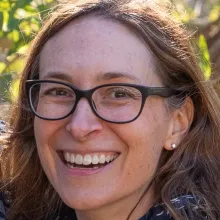Dynamic evolution of subduction zones and continental collision
Congested subduction happens whenever buoyant material such as an oceanic plateau gets caught up on a moving plate and eventually arrives at a subduction zone. The buoyant material may be scraped off or subducted, but it always puts up a fight which leaves characteristic scars on the over-riding plate.
Project status
Content navigation
About

This project has additional support from an ARC Discovery Grant and will extend models of congested subduction. Congested subduction happens whenever buoyant material such as an oceanic plateau or continental ribbon gets caught up on a moving plate and eventually arrives at a subduction zone. The buoyant material may be scraped off or subducted but it always puts up a fight which leaves characteristic scars on the over-riding plate. The process is seen at most subduction zones and in the geological record - for example see https://www.underworldcode.org/articles/the-dynamics-of-continental-accretion/. This project will involve learning how to run numerical models and will provide additional training in cloud computing, supercomputing and python.
This is a general project that can be tailored to suit students of any level. Previous work in this area has been published and may be useful for students considering working with us.
- Moresi, L., P. G. Betts, M. S. Miller, and R. A. Cayley. “Dynamics of Continental Accretion.” Nature 508, no. 7495 (April 2014): 245–48. https://doi.org/10.1038/nature13033.
- Sharples, W., M. A. Jadamec, L. N. Moresi, and F. A. Capitanio. “Overriding Plate Controls on Subduction Evolution.” Journal of Geophysical Research: Solid Earth 119, no. 8 (2014): 6684–6704. https://doi.org/10/gf9rjc.
- Betts, Peter G., Louis Moresi, Meghan S. Miller, and David Willis. “Geodynamics of Oceanic Plateau and Plume Head Accretion and Their Role in Phanerozoic Orogenic Systems of China.” Geoscience Frontiers, Special Issue: Plate and plume tectonics: Numerical simulation and seismic tomography, 6, no. 1 (January 1, 2015): 49–59. https://doi.org/10/gf9rk8.
- Sharples, W., L. N. Moresi, M. Velic, M. A. Jadamec, and D. A. May. “Simulating Faults and Plate Boundaries with a Transversely Isotropic Plasticity Model.” Physics of the Earth and Planetary Interiors 252 (March 1, 2016): 77–90. https://doi.org/10/gf9rjj.
- Sandiford, D., L. M. Moresi, M. Sandiford, R. Farrington, and T. Yang. “The Fingerprints of Flexure in Slab Seismicity.” Tectonics, June 22, 2020, e2019TC005894. https://doi.org/10/gg33c4.
- Carluccio, R., B. Kaus, F. A. Capitanio, and L. N. Moresi. “The Impact of a Very Weak and Thin Upper Asthenosphere on Subduction Motions.” Geophysical Research Letters, November 11, 2019, 2019GL085212. https://doi.org/10.1029/2019GL085212.



